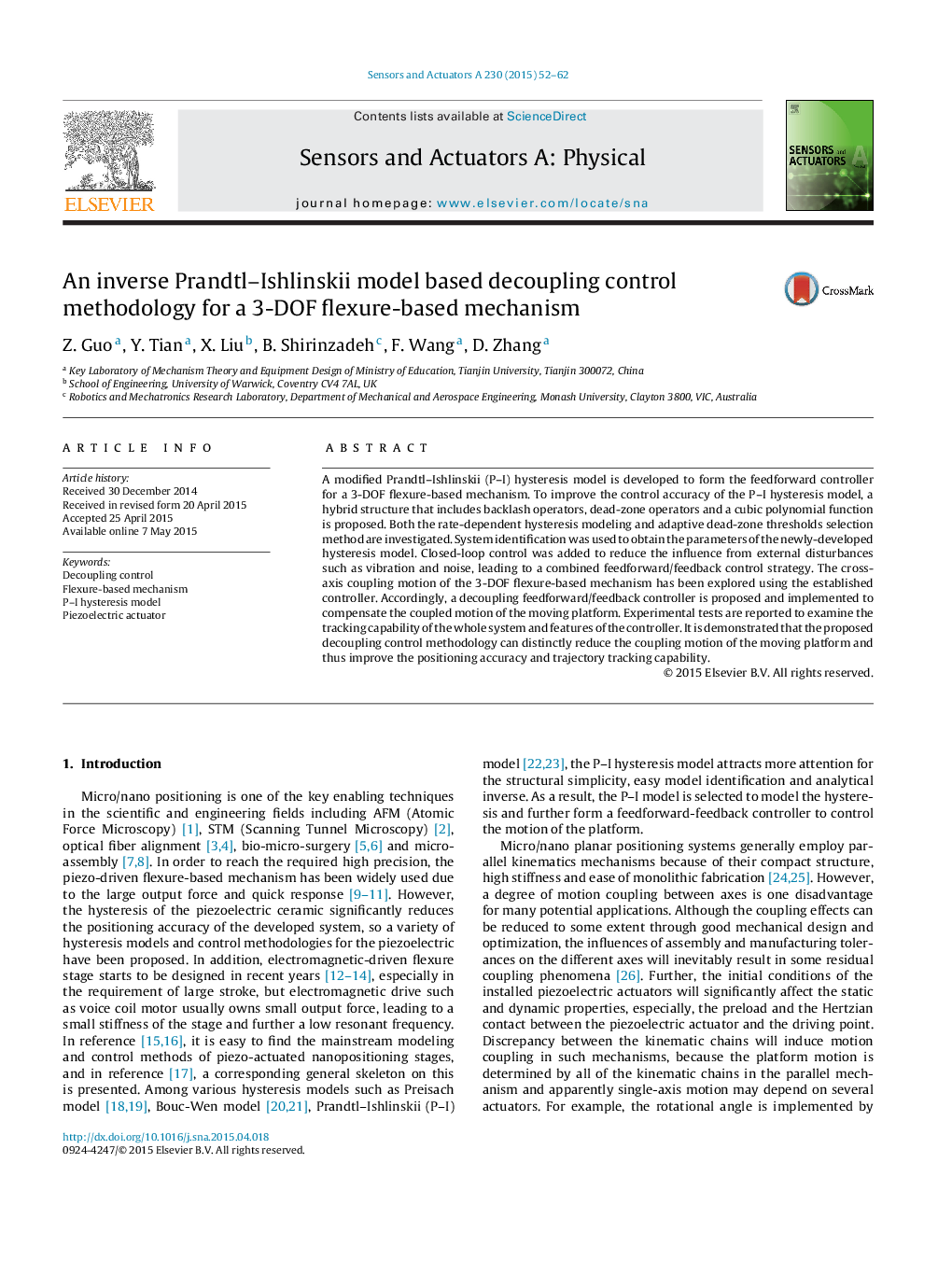| Article ID | Journal | Published Year | Pages | File Type |
|---|---|---|---|---|
| 736921 | Sensors and Actuators A: Physical | 2015 | 11 Pages |
•A modified inverse Prandtl–Ishlinskii hysteresis model has been developed.•An inverse Prandtl–Ishlinskii model based feedforward/feedback controller has been proposed to reduce/eliminate the nonlinearity.•A decoupling control algorithm has been proposed to reduce the coupling error motions.
A modified Prandtl–Ishlinskii (P–I) hysteresis model is developed to form the feedforward controller for a 3-DOF flexure-based mechanism. To improve the control accuracy of the P–I hysteresis model, a hybrid structure that includes backlash operators, dead-zone operators and a cubic polynomial function is proposed. Both the rate-dependent hysteresis modeling and adaptive dead-zone thresholds selection method are investigated. System identification was used to obtain the parameters of the newly-developed hysteresis model. Closed-loop control was added to reduce the influence from external disturbances such as vibration and noise, leading to a combined feedforward/feedback control strategy. The cross-axis coupling motion of the 3-DOF flexure-based mechanism has been explored using the established controller. Accordingly, a decoupling feedforward/feedback controller is proposed and implemented to compensate the coupled motion of the moving platform. Experimental tests are reported to examine the tracking capability of the whole system and features of the controller. It is demonstrated that the proposed decoupling control methodology can distinctly reduce the coupling motion of the moving platform and thus improve the positioning accuracy and trajectory tracking capability.
